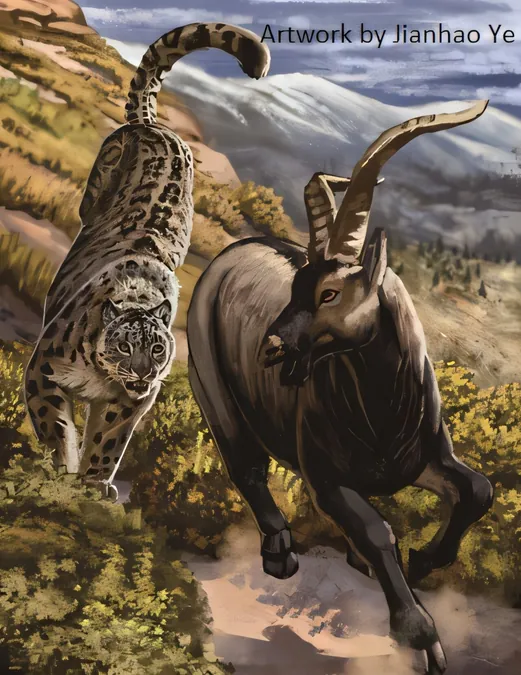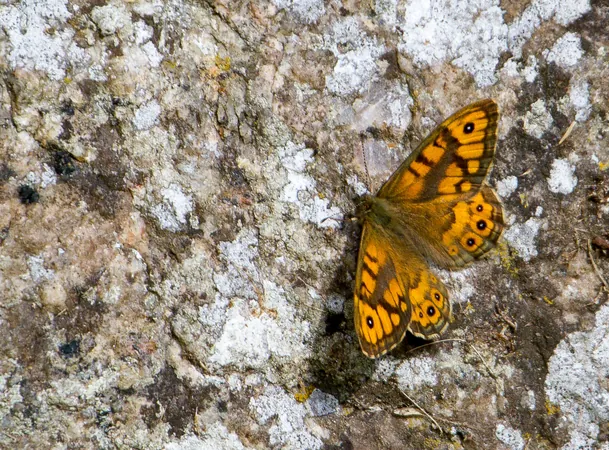
Stunning Discovery Reveals How Snow Leopards Dominated Asia and Europe During the Last Ice Ages!
2025-01-15
Author: Rajesh
An Extraordinary Breakthrough
An extraordinary breakthrough by an international team of scientists has unveiled fossils of snow leopards for the very first time, allowing researchers to unlock the evolutionary tale of these majestic creatures from the Quaternary period. This fascinating study, recently published in Science Advances, provides groundbreaking insights into how snow leopards traversed from the frigid Tibetan plateau all the way to the Iberian Peninsula—an astonishing journey far removed from their typical high-altitude habitats in the Himalayas.
Current Status and Habitat
Snow leopards (Panthera uncia) are currently teetering on the brink of extinction, with an estimated population of only around 4,000 left in the wild. These enigmatic felids prefer cold, rocky landscapes at elevations exceeding 2,000 meters, primarily residing in the breathtaking Himalayas. While their remarkable adaptations to these environments have long been noted, previous gaps in fossil evidence have obscured their evolutionary story.
Previous Discoveries
Before this discovery, some unconfirmed remains had been found in northern China and parts of Europe, yet their authenticity and placement within the snow leopard lineage remained ambiguous.
Research Team and Findings
The research team, led by notable scientists Qigao Jiangzuo from Peking University and Joan Madurell Malapeira from the Universitat Autònoma de Barcelona, meticulously examined numerous samples associated with common leopards (Panthera pardus) across Europe and Asia. In a groundbreaking achievement, they successfully identified five snow leopard fossils from locations in China, France, and Portugal, dating back around 1 million years.
Evolutionary Insights
This discovery enabled the researchers to construct a clearer picture of how snow leopards adapted and evolved during the Quaternary, and how they might have spread geographically over time. Through a combination of morphometric and phylogenetic analyses along with sophisticated mathematical species distribution models, the team painted a fuller picture of snow leopard evolution.
Differences and Adaptations
The research uncovered interesting differences between snow leopards and their more common relatives. Unlike common leopards, which are built to pursue swift prey in forested areas, snow leopards are uniquely equipped to thrive in harsh mountain terrains. Their adaptations include larger teeth, a domed skull structure, and robust jaws and paws that make them formidable hunters of rugged prey like mountain goats.
Surprising Range Expansion
Moreover, adaptation to rocky, harsh landscapes also led to enhanced binocular vision, a larger cranial structure for improved hearing, powerful limbs capable of absorbing the shock from significant leaps, and a long tail for maintaining balance—all of which solidified during the colder periods of the last Ice Ages. But that's not all! Researchers found that during these icy phases, snow leopards expanded their range beyond the Himalayas, moving into central China and, unexpectedly, migrating westward to the Iberian Peninsula.
Fossil Findings in Western Europe
A spectacular fossil found in Portugal, dubbed the 'leopard of Algar da Manga Larga,' has been identified as an unexpected member of the snow leopard lineage in Western Europe. Dating back about 900,000 years, this fossil suggests that as glaciations intensified across Eurasia, more open landscapes emerged, allowing snow leopards to inhabit regions such as Portugal until approximately 40,000 years ago.
New Understanding and Future Studies
This research challenges the long-standing belief that high altitudes and snow define the snow leopard's habitat. Instead, they thrive in open and steep environments," states Malapeira. With climate change raising concerns for their future, this new understanding offers hope for conservation efforts aimed at safeguarding snow leopards. Future studies are set to delve deeper into the neuroanatomy and ecology of the Algarve's ancient leopards, promising to unveil even more about the fascinating history of this iconic highland predator.
Conclusion
Will these findings change the way we envision protecting snow leopards in a warming world? Only time will tell! Stay tuned for more updates on the remarkable life of snow leopards!




 Brasil (PT)
Brasil (PT)
 Canada (EN)
Canada (EN)
 Chile (ES)
Chile (ES)
 Česko (CS)
Česko (CS)
 대한민국 (KO)
대한민국 (KO)
 España (ES)
España (ES)
 France (FR)
France (FR)
 Hong Kong (EN)
Hong Kong (EN)
 Italia (IT)
Italia (IT)
 日本 (JA)
日本 (JA)
 Magyarország (HU)
Magyarország (HU)
 Norge (NO)
Norge (NO)
 Polska (PL)
Polska (PL)
 Schweiz (DE)
Schweiz (DE)
 Singapore (EN)
Singapore (EN)
 Sverige (SV)
Sverige (SV)
 Suomi (FI)
Suomi (FI)
 Türkiye (TR)
Türkiye (TR)
 الإمارات العربية المتحدة (AR)
الإمارات العربية المتحدة (AR)